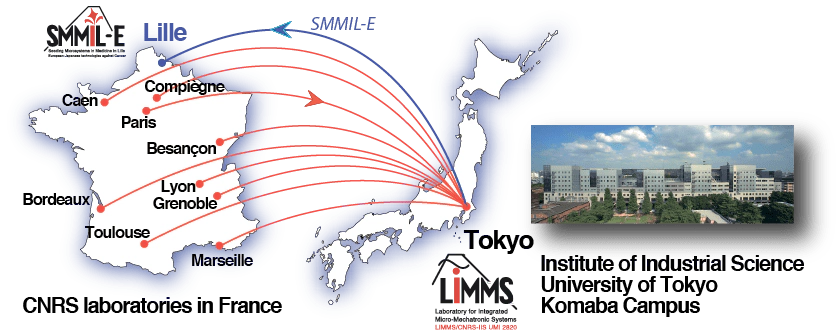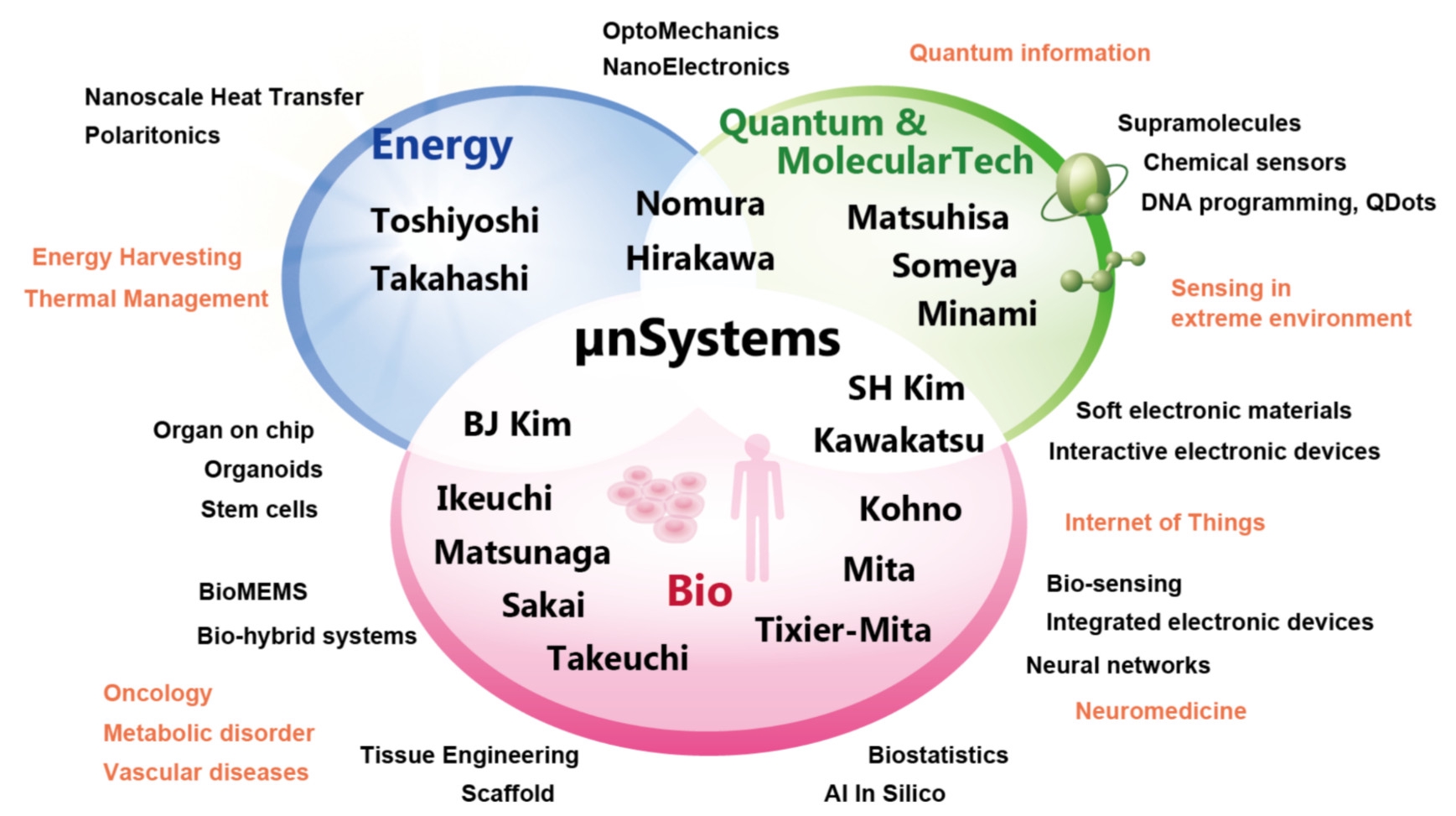Laboratory for Integrated
Micro-Mechatronic Systems
LIMMS is a CNRS International Research Laboratory (IRL 2820) on MEMS and NEMS (Micro- and Nano-Electro-Mechanical Systems), jointly operated by France (CNRS, Institute for Sciences of Engineering and Systems
), and Japan (University of Tokyo, Institute of Industrial Science
). LIMMS operates on two sites: the Komaba Research Campus of the University of Tokyo, Japan and the university hospital of Centre Oscar Lambret in Lille, France. Since its founding in 1995, LIMMS has hosted more than 175 researchers from France and Europe (mainly CNRS researchers and JSPS postdoctoral fellows). Due to its close integration into the French, European and Japanese research communities, LIMMS has been a focal point and a coordinating institution for major interdisciplinary and international projects such as SMMIL-E
, iLITE, and EUJO-LIMMS
.
Since 2023, the LIMMS direction has highlighted three general fields of applications in micro and nanotechnologies by proposing the research axes of Energy, Bio, Quantum and Molecular Technologies:
In the Energy research axis, LIMMS researchers have obtained world-class results in developing phononic crystals for heat guiding and focusing. Technologies developed at LIMMS are at the cutting edge of thermoelectric micro-devices and have confirmed new concepts in thermionic cooling. Interface research programs are also set to find solutions to power the internet of things based on energy harvesters integrated with Smart MEMS devices.
This research axis is a highly interdisciplinary field that combines cutting research from physics, chemistry, and biology. This axis bridges the two other axes (energy and biology), while also exploring its unique research questions. At the heart of this axis lies the exploration and integration of quantum technology and molecular technology. Quantum technology is concerned with the use of quantum mechanics to develop new technologies, such as manipulating the transport of heat, electrons or light, while molecular technology deals with the study and manipulation of molecules and their properties. Our research ranges from fundamental endeavors such as single-electron transfer in electrochemistry to the storing of massive data in DNA, the sensing of biomolecules, or the integration of electronics into our everyday life with flexible electronics.
The Bio axis gathers three themes. Disease treatment via prevention and detection is investigated by developing new devices for diagnosis and vaccine delivery. With a complementary approach, implantable tissues and devices are also key activities. This branch is related to complex tissues opening to organ modelling where the cellular and even the molecular scale are investigated. Researchers seek to better understand blood vessel formation, neuronal communication behavior, and the interaction of metabolic organs such as the liver and pancreas. By studying different organs, LIMMS aims at understanding the role of tissues and especially cell interactions in diseased and healthy tissues. BioMEMS such as platforms with multi-modal sensors and actuators are developed in LIMMS to help investigate organ behavior and create biohybrid systems. Biocompatible materials and/or cells are also used to create Bio-robotic systems. A particularity of the Bio axis is the complementary contribution of an international team, SMMIL-E. Its activities are focused on research against cancer, at the interface between BioMEMS and Organ modeling.

Open positions
Research Internship FY 2026 at LIMMS/CNRS-IIS (IRL 2820)
LIMMS provides hands-on research internship opportunities with 10 projects, mainly focused on Biology, Energy, and Quantum & Molecular Tech. in the field of MEMS and NEMS. Please select a project that suits you, read the application guidelines carefully, and submit your application by the deadline of 30 November.
· Agnes Taxier-Mita Lab. project
· Kuroyama Lab. project
· Mita Lab. project
· Matsuhisa Lab. project
· Nomura Lab. project A
· Nomura Lab. project B
· SH Kim Lab. project
· Sakai Lab. project A
· Kawakatsu Lab. project
Deadline for application is 30 November 2024.
LIMMS Booklet 2025
Annual booklet of the lab activity, projects, and collaborations is available for download
:
